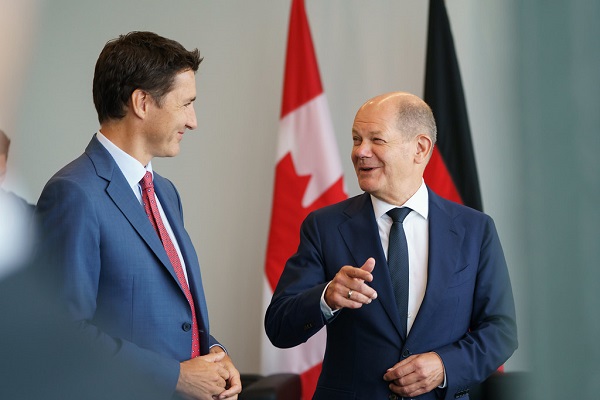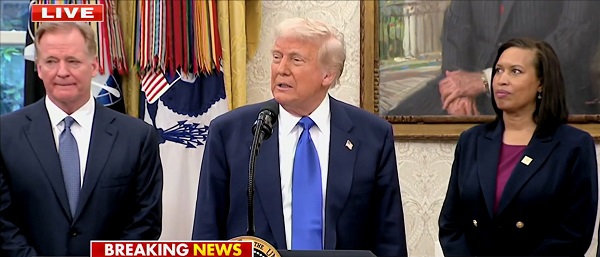Energy
Canadian hydrogen is not a silver bullet for Germany’s energy needs

From Resource Works
Germany bet big on hydrogen, an infant technology in terms of commercial viability. Canada also jumped on the hydrogen train at a time when they should have been doubling down on LNG exports, a resource Canada has in abundance
Canada and Germany had, and probably still have, such mighty ambitions for their hydrogen. Lauded as a can’t-miss step in the journey towards a clean energy utopia that would position Canada as a world leader in hydrogen, it is now cracking before it even really gets underway.
The goal of the deal was a good one. Germany wanted to reduce its reliance on vast amounts of Russian gas following the invasion of Ukraine in 2022. However, the nonstop delays and challenges of realizing a Canada-Germany hydrogen deal have exposed the folly of going all in on a non-developed energy source at the cost of an existing one. These problems make it very clear that both Canada and Germany have miscalculated by placing all their eggs in one basket for a long-term goal, instead of turning to alternatives like liquefied natural gas (LNG) in the short term.
The federal government announced that there was no “business case” for exporting LNG to Europe at the time.
Hydrogen has a good future as a clean, renewable source of energy, and that is undeniable. It is not going to happen overnight as it will require large-scale facilities for production and distribution, especially for green hydrogen. Canada and Germany signed their hydrogen agreement in 2022, aimed at jumpstarting Canadian hydrogen exports by 2025.
We are now sitting at the end of 2024, and the necessary infrastructure is not close to being completed. Facilities in Atlantic Canada intended to help supply the hydrogen are still in their planning stages, while German investment is falling behind.
As far as logistics go, hydrogen presents a huge challenge. To produce hydrogen, massive amounts of energy are needed, and the plan to use wind energy to power these facilities is very impractical. Hydrogen also must be converted into ammonia for shipment, which is another energy-intensive and expensive process. When ammonia does theoretically reach Germany, up to 80 percent of the original energy load is expected to have been lost. If such a loss could be captured in a photo, it could slot into the dictionary for the word “inefficient.”
Germany needs energy security given its divorce from Russian gas, and this demanded a far more immediate response in 2022. Rather than diversifying energy imports and turning to short-term solutions like Canadian LNG, Germany bet big on hydrogen, an infant technology in terms of commercial viability. Canada also jumped on the hydrogen train at a time when they should have been doubling down on LNG exports, a resource Canada has in abundance, and which, like most fossil fuels, can be stored and shipped with speed and efficiency.
While hydrogen has a future, refusing to embrace LNG as an export to Europe was a mistake when responding to Europe’s energy crisis. Both the United States and Qatar secured long-term contracts for LNG exports to Europe, while Canada has been absent from the table. Germany itself invested heavily in floating LNG terminals, highlighting how natural gas will remain a vital part of the European energy mix for years to come.
There is great irony in the fact that natural gas, while still emitting more than hydrogen, produces far fewer emissions than coal, which many European states have been forced to turn to in the wake of energy shortfalls. Germany is one of the world’s most prolific consumers of coal, and that has only intensified with the cutoff of Russian gas, undermining its ambitious climate goals. Canadian LNG should have played a greater role while hydrogen infrastructure was constructed in Canada, and investment capital was raised in Germany.
What the ongoing delays and inefficiencies in the Canada-Germany hydrogen deal demonstrate is a cautionary tale. While hydrogen has a key role to play in the future of global energy, it is not a silver bullet in the short term.
Automotive
Federal government should swiftly axe foolish EV mandate

From the Fraser Institute
Two recent events exemplify the fundamental irrationality that is Canada’s electric vehicle (EV) policy.
First, the Carney government re-committed to Justin Trudeau’s EV transition mandate that by 2035 all (that’s 100 per cent) of new car sales in Canada consist of “zero emission vehicles” including battery EVs, plug-in hybrid EVs and fuel-cell powered vehicles (which are virtually non-existent in today’s market). This policy has been a foolish idea since inception. The mass of car-buyers in Canada showed little desire to buy them in 2022, when the government announced the plan, and they still don’t want them.
Second, President Trump’s “Big Beautiful” budget bill has slashed taxpayer subsidies for buying new and used EVs, ended federal support for EV charging stations, and limited the ability of states to use fuel standards to force EVs onto the sales lot. Of course, Canada should not craft policy to simply match U.S. policy, but in light of policy changes south of the border Canadian policymakers would be wise to give their own EV policies a rethink.
And in this case, a rethink—that is, scrapping Ottawa’s mandate—would only benefit most Canadians. Indeed, most Canadians disapprove of the mandate; most do not want to buy EVs; most can’t afford to buy EVs (which are more expensive than traditional internal combustion vehicles and more expensive to insure and repair); and if they do manage to swing the cost of an EV, most will likely find it difficult to find public charging stations.
Also, consider this. Globally, the mining sector likely lacks the ability to keep up with the supply of metals needed to produce EVs and satisfy government mandates like we have in Canada, potentially further driving up production costs and ultimately sticker prices.
Finally, if you’re worried about losing the climate and environmental benefits of an EV transition, you should, well, not worry that much. The benefits of vehicle electrification for climate/environmental risk reduction have been oversold. In some circumstances EVs can help reduce GHG emissions—in others, they can make them worse. It depends on the fuel used to generate electricity used to charge them. And EVs have environmental negatives of their own—their fancy tires cause a lot of fine particulate pollution, one of the more harmful types of air pollution that can affect our health. And when they burst into flames (which they do with disturbing regularity) they spew toxic metals and plastics into the air with abandon.
So, to sum up in point form. Prime Minister Carney’s government has re-upped its commitment to the Trudeau-era 2035 EV mandate even while Canadians have shown for years that most don’t want to buy them. EVs don’t provide meaningful environmental benefits. They represent the worst of public policy (picking winning or losing technologies in mass markets). They are unjust (tax-robbing people who can’t afford them to subsidize those who can). And taxpayer-funded “investments” in EVs and EV-battery technology will likely be wasted in light of the diminishing U.S. market for Canadian EV tech.
If ever there was a policy so justifiably axed on its failed merits, it’s Ottawa’s EV mandate. Hopefully, the pragmatists we’ve heard much about since Carney’s election victory will acknowledge EV reality.
Daily Caller
Trump Issues Order To End Green Energy Gravy Train, Cites National Security


From the Daily Caller News Foundation
By Audrey Streb
President Donald Trump issued an executive order calling for the end of green energy subsidies by strengthening provisions in the One Big Beautiful Bill Act on Monday night, citing national security concerns and unnecessary costs to taxpayers.
The order argues that a heavy reliance on green energy subsidies compromise the reliability of the power grid and undermines energy independence. Trump called for the U.S. to “rapidly eliminate” federal green energy subsidies and to “build upon and strengthen” the repeal of wind and solar tax credits remaining in the reconciliation law in the order, directing the Treasury Department to enforce the phase-out of tax credits.
“For too long, the Federal Government has forced American taxpayers to subsidize expensive and unreliable energy sources like wind and solar,” the order states. “Reliance on so-called ‘green’ subsidies threatens national security by making the United States dependent on supply chains controlled by foreign adversaries.”
Dear Readers:
As a nonprofit, we are dependent on the generosity of our readers.
Please consider making a small donation of any amount here.
Thank you!
Former President Joe Biden established massive green energy subsidies under his signature 2022 Inflation Reduction Act (IRA), which did not receive a single Republican vote.
The reconciliation package did not immediately terminate Biden-era federal subsidies for green energy technology, phasing them out over time instead, though some policy experts argued that drawn-out timelines could lead to an indefinite continuation of subsidies. Trump’s executive order alludes to potential loopholes in the bill, calling for a review by Secretary of the Treasury Scott Bessent to ensure that green energy projects that have a “beginning of construction” tax credit deadline are not “circumvented.”
Additionally, the executive order directs the U.S. to end taxpayer support for green energy supply chains that are controlled by foreign adversaries, alluding to China’s supply chain dominance for solar and wind. Trump also specifically highlighted costs to taxpayers, market distortions and environmental impacts of subsidized green energy development in explaining the policy.
Ahead of the reconciliation bill becoming law, Trump told Republicans that “we’ve got all the cards, and we are going to use them.” Several House Republicans noted that the president said he would use executive authority to enhance the bill and strictly enforce phase-outs, which helped persuade some conservatives to back the bill.
-

 Also Interesting2 days ago
Also Interesting2 days ago9 Things You Should Know About PK/PD in Drug Research
-

 Business2 days ago
Business2 days ago‘Experts’ Warned Free Markets Would Ruin Argentina — Looks Like They Were Dead Wrong
-

 Business1 day ago
Business1 day agoCannabis Legalization Is Starting to Look Like a Really Dumb Idea
-

 Business2 days ago
Business2 days agoWEF-linked Linda Yaccarino to step down as CEO of X
-

 Business1 day ago
Business1 day agoCarney government should recognize that private sector drives Canada’s economy
-

 Bruce Dowbiggin1 day ago
Bruce Dowbiggin1 day agoThe Covid 19 Disaster: When Do We Get The Apologies?
-

 Automotive2 days ago
Automotive2 days agoAmerica’s EV Industry Must Now Compete On A Level Playing Field
-

 Media1 day ago
Media1 day agoCBC journalist quits, accuses outlet of anti-Conservative bias and censorship






